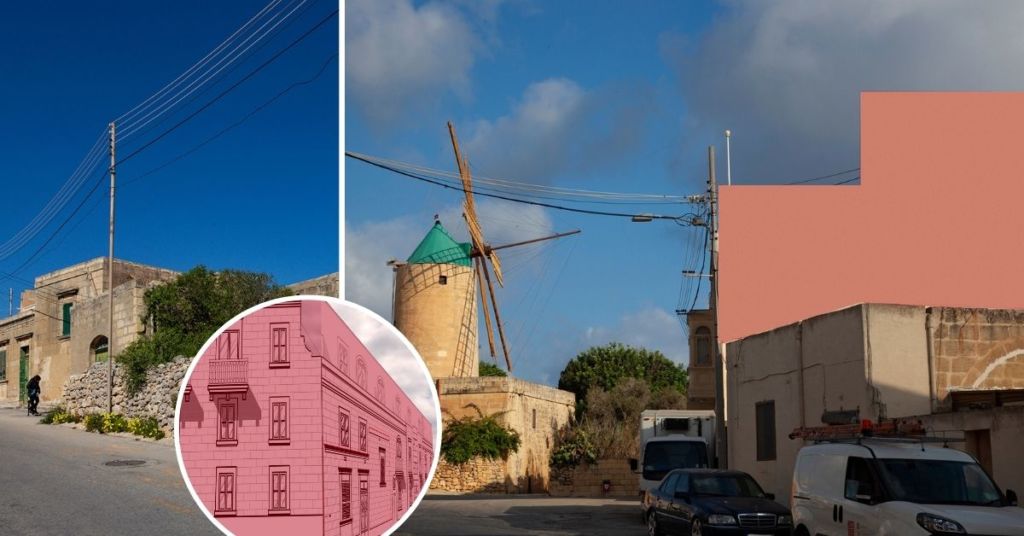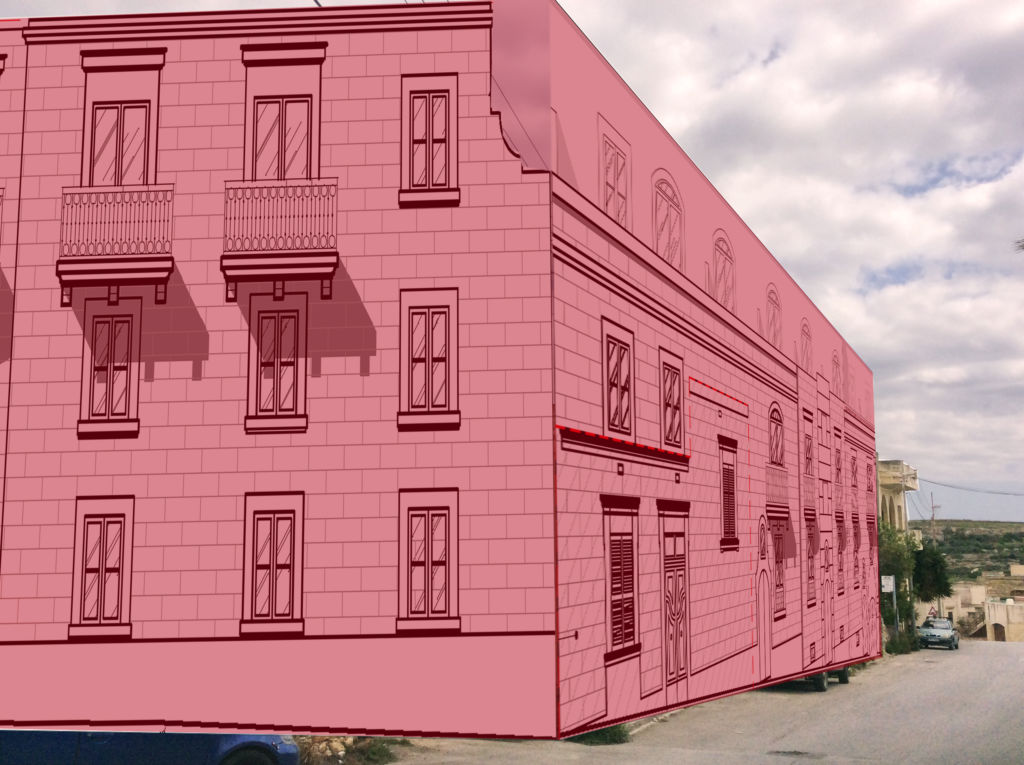Heritage Entities Fears’ Over Multi-Storey Blocks Of Flats In Neighbourhood Of Ggantija

The Superintendence of Cultural Heritage has come out swinging against revised plans for a block of multistorey flats within sight of Ggantija Temples, which are considered Malta’s oldest Neolithic temples, and designated a World Heritage Site. The block of 27 flats and 20 garages is located just outside the temples’ enclosure, around 150 metres from the temple itself.
The proposed block, called Gigantija Heights, triggered an outcry and a staggering 1820 objections last year when an application was lodged with the Planning Authority.
There have since been three other separate planning applications for blocks of flats elsewhere around the periphery of Ggantija’s enclosure, with heritage authorities and the Xaghra Local Council decrying these as a “dangerous precedent” or “ugly precedent” on the temples’ setting.

These fears have been intensified by the photomontages of the proposed block known as Gigantija Heights. Even though an entire floor has been lopped off from the project as initially proposed, the photomontages demonstrate the impact on the view from within the archaeological site of the proposed block that now ranges between 3 and 4 storeys.
The Superintendence of Cultural Heritage wrote that the revised architectural drawings constitute “a considerable improvement on the previous proposal” but that there remains “a significant impact on existing views and vistas as seen from Ġgantija.”
It added: “This impact is indicated in the submitted photomontages and was identified by the Superintendence of Cultural Heritage and UNESCO World Heritage Sites Technical Committee. In view of this, the uppermost floor is to be removed from the proposal.”
Lopping off an additional floor would bring the height of the block of flats to the level of existent buildings on either side of it – and hence blend it into the current streetscape and skyline in terms of height. Yet the Superintendence also recommends breaking the development into two separate blocks to reduce the impact of the massing, given the block’s wide frontage as currently proposed.

The other three separate planning applications scattered elsewhere around the periphery of the Ggantija Temples enclosure include two blocks of five-storeys and a block of four-storeys. The latter sits between the entrance to Ggantija Temples and the Ta Kola Windmill, while the other two are in the midst of a zone of two-storey townhouses that were built in the 1970s.
This neighbourhood with its townhouses lies in between three top-level heritage monuments – the Xaghra Stone Circle, Ggantija Temples, and Ta Kola Windmill – and the three applications for multistorey blocks would, if granted, radically alter the current streetscape and open the way for other five-storey blocks of flats that would, in turn, transform the entire neighbourhood.
This point has been emphasized by many of the objectors to these developments. The Xaghra Local Council wrote to the Planning Authority that these blocks of flats would set a “dangerous precedent”, explaining that the impact would not only be on the setting of Ggantija and other heritage monuments but also “on the townscape of Xaghra in general.”
The NGO Wirt Ghawdex said this would be an “ugly precedent”, and added that it “believes that this area of Xagħra should retain its present low-lying character and high-rise buildings should be refused.”

Heritage Malta, the national custodian of national heritage, also made a similar point. It said that “if given the green light, [this] will set an ugly precedent in the area, and similar high-rise buildings on the same street will become visible from Ġgantija, L-Għar ta’ Għejżu and Ta’ Kola Windmill.”
Heritage Malta added: “We have a national obligation to ensure that AAIs [Area of Archeological Influence, which covers the neighbourhood] are managed according to the World Heritage Operational Guidelines. We believe that the context of scheduled sites and buildings are integral to, and essential in protecting the values of, the monuments themselves.”
In plainer English, marring the neighbourhood of Ggantija Temples – a World Heritage Site – with blocks of nondescript flats would be an impingement on the World Heritage Site itself.
Check out Lovin Malta’s Planning Web, the country’s first transparent and open platform letting you look at the ins and outs of Malta’s urban planning sector.

Victor Paul Borg has lived in various countries and worked as an author, journalist and photographer for around 25 years. His work has been published widely in many countries and his website, victorborg.com, includes extended coverage and technical reportage on the blocks of flats mentioned in this article, go to the website.
What do you think of the development?
